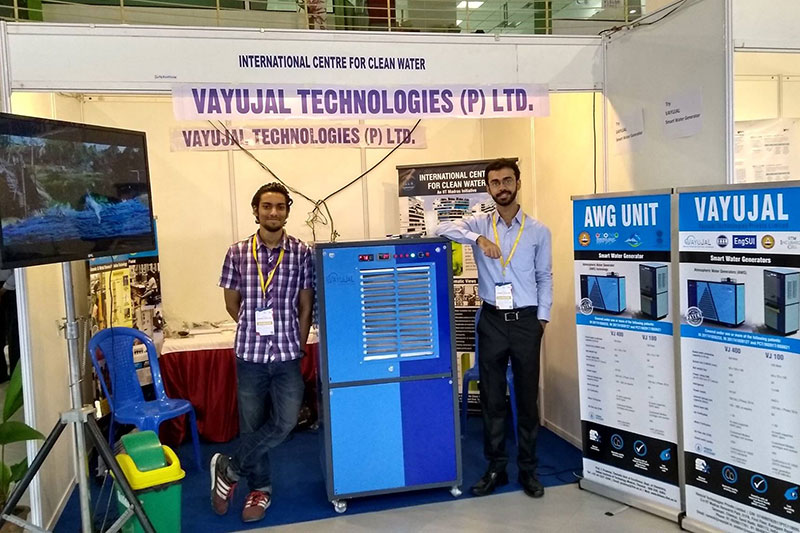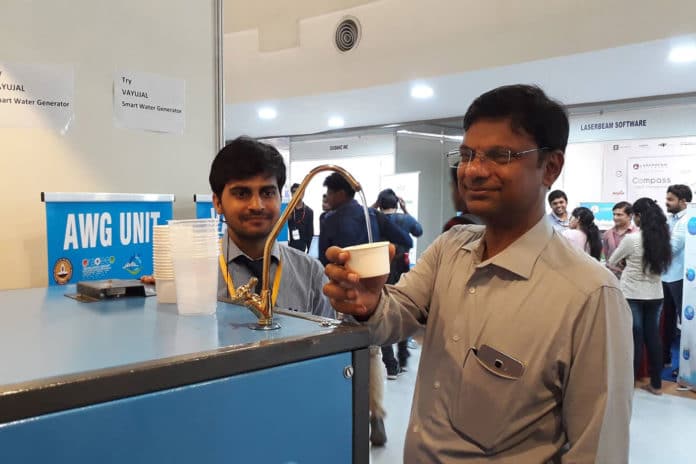A research team from the Indian Institute of Technology, Madras (IIT-M), has come up with a method to tackle the ongoing water crisis in Chennai by atmospheric water harvesting. The team has developed a device called Atmospheric Water Generators (AWG) that harnesses the moisture in the air to provide portable water.
The AWG works similar to an air-conditioner, where there is a condensation of water. The device procures water in three steps via a machine. First, air enters the mechanism through a filter situated in front of the machine. Then the moisture in the filtered air gets condensed on the nano-engineered surface inside the machine. The relative humidity content goes high and water starts to come out of it. Lastly, the collected water is subsequently purified and mineralized to deliver drinking water.
The rate of portable water production depends upon the ambient temperature, humidity level, the volume of air passing over the coil and the unit’s capacity to cool the coil.
IIT-M designs and structures the critical components like air filters, water purifiers, heat exchanger coils, condensers, evaporators, compressors, and some fans and assembled all of them together. And the nanotechnology part comes where condensation happens.

The team includes MS scholar Ramesh Kumar, professor T Pradeep, and Ph.D. scholar Ankit Nagar to together founded VayuJal Technologies Pvt Ltd in September 2017. The company has produced four AWGs so far – three of 100 liters a day capacity and one has 400 liters a day capacity. All of them are tested out in various locations around IIT-M. And now the team has started making a 2000 liters a day water generator with solar back-up.
VayuJal is working on reducing power consumption or using solar panels on the larger units to produce more water. The team is also working on making a unit that will work well in desert conditions as in his native Rajasthan.
“We are trying to increase heat transfer and condensation efficiency. If both go higher, we will have lesser power consumption per liter of water produced,” said Ramesh while speaking to The Hindu team. “The objective is to ensure minimal costs for maintenance and power consumption, running these units for 10-15 years.”
Visit the company website for more details.
